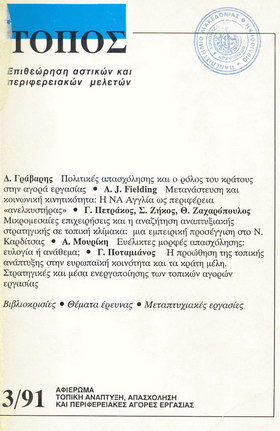Flexible working patterns : a blessing or a curse?
DOI:
https://doi.org/10.26266/jtovol3pp97-117Keywords:
Flexible working patterns, Labor market, Working time, Flexibility in employmentAbstract
The expansion of flexible working patterns is closely associated with the restructuring of the production process and the quest for greater labour market flexibility. At the same time, it responds to the needs of a growing part of the labour force for non-standard and flexible forms of employment. The prevalence of considerable and serious disadvantages of the flexible working patterns for the labour force, should not conceal certain positive aspects, which could give a new meaning to the content of work and permit the re-distribution of working time. The expansion of flexible employment and the demise of the rigid pattern of full-time, stable employment, in association with drastic changes in the composition of the labour force, demand a radically new approach on behalf of the trade unions. In order to reverse their declining influence and respond to the new challenges, the latter should adopt a more «flexible» strategy aiming: (a) to improve the content of flexible working patterns; (b) to «control» their terms of expansion; (c) to prevent the danger of further fragmentation of the labour market; (d) to enhance the protection of the peripheral workforce. The forthcoming european integration, on the one hand will provide the opportunity to upgrade the working conditions of the flexible workforce (through a more socially-aware legislation), while at the same time it will accentuate the negative effects of international competition on the greek economy and the local labour force. The only viable and realistic policy, at present, seems to be the improvement of the content and the terms of diffusion of the flexible forms of employment. In the long run, a generalised reduction of working time and the re-organisation of work can be re-negotiated. Realising this, requires a change in the conventional ways of perceiving work-time and the distribution of work.Downloads
Published
1991-10-16
Issue
Section
Articles

